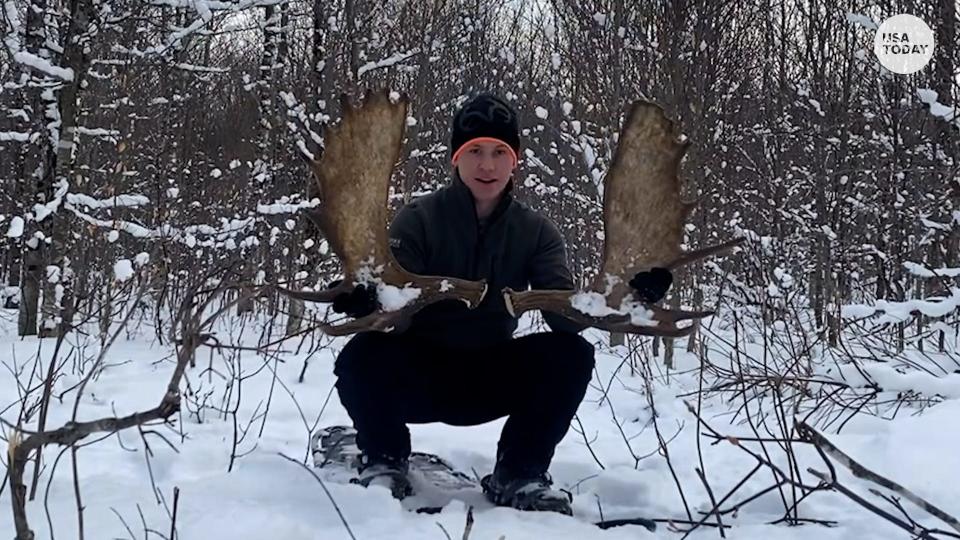Rare footage: Drone captures moose shedding both antlers. Why do moose antlers fall off?
Canadian wildlife enthusiast Derek Keith Burgoyne was following three bull moose when he noticed one come to a dead stop and begin to shake. It was about to shed its antlers.
Luckily, Burgoyne had his drone.
Burgoyne had been filming the moose in Plaster Rock, New Brunswick when he was able to capture footage of the moose shedding both of its antlers, a rare occurrence. He was also able to collect the antlers and bring them home to display.
“I consider this winning the lottery when it comes to filming wildlife,” Burgoyne told Storyful after he captured the footage on Jan. 12. “A bull can shed one antler and carry the other side for days or even weeks. So, to capture both antlers shedding at the exact time is extremely rare. Once-in-a-lifetime moment!”
So why do moose shed their antlers? We found out.
Why moose shed their antlers

The more common term in the wildlife world is "casting." Hoofed animals like moose, deer and elk shed their antlers every winter starting at the age of 1 after mating season ends.
Mating season for moose begins late September and comes to a close in early October. Though cows may give birth to a calf by the age of 2, according to Maine Inland Fisheries and Wildlife, bulls don't start breeding until they're 5, according to the New York State Conservationist Magazine.
The antlers are useful during mating season because "moose like to push those antlers against each other for dominance,” Lee Kantar, moose biologist with the Department of Inland Fisheries and Wildlife in Maine, told National Geographic.
Though antlers may attract female moose in the spring, they aren't worth carrying around when mating is over, especially because they can get in the way of feeding, the Smithsonian reports. Plus, a bull's antlers can add 60 pounds of weight to their body, so shedding them makes it possible to store more energy for winter, according to National Geographic.
"Casting" doesn't happen immediately, though. It's usually in the month of January, deeper into winter, as daylight is diminished and testosterone production is down. The connective tissue between the antlers and the skull weakens enough to no longer support the antlers, the according to the U.S. Fish and Wildlife Service.
'Rutt' the moose: Minnesota bull goes viral as fans online track his journey
Ring camera captures Alaskan moose shedding antlers
Also captured last year around this time was incredible footage of a moose shedding its antlers outside of a home in Houston, Alaska.
A homeowner's Ring camera caught the moment it happened. The moose rid itself of its antlers in a single shake and the homeowner lifted them up to the camera for all to see how massive they actually are.
Alaska is home to the largest moose population in the U.S., with around 200,000, according to a wildlife tracker. But nowhere on Earth has as many moose as Canada. There are 830,000 moose roaming there, according to the Northwest Wildlife Preservation Society.
This article originally appeared on USA TODAY: Drone captures moose shedding both antlers. Why does it happen?

